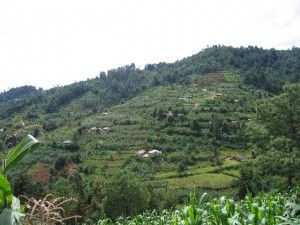Our agricultural and food system have many inefficiencies. Damages to the environment and promotion of an unhealthy food system are both causes and consequences of bad agricultural practices. We’ve previously studied the dangers of the monocrops. They’re apparently threatening our long-term agricultural sustainability (to learn more see posts). A change is needed, but how can we reform our agricultural system in ways that are better for the environment as well as better for the consumer? There are many alternative forms of agriculture that could serve both of these objectives, but what we have to focus about is sustainability and long-term food security.
Two questions are essential when you think about sustainable forms of agriculture- how do you bring food closer to the people (consumer) so that the consumer can have a say in what they eat? And how do you make it in a way that is friendly to the environment? In my opinion it’s all about creating a smart agricultural design that benefits the environment and people.
I’ve recently begun to read about permaculture. Permaculture is defined as sustainable land use design. The method was developed by Australians Bill Mollison and David Holmgren during the 1970s. It’s goal is to satisfy the agricultural necessities of humans based on ecological and biological principles. It’s based on patterns that occur in nature. Permaculture redesigns these patterns to maximize effectiveness, reduce energy waste and minimize work when we grow our food. To make the most out of nature, the ecological processes of plants, animals, their nutrient cycles, climatic factors and weather cycles are taken into consideration. It seems like an attractive alternative indeed.
of humans based on ecological and biological principles. It’s based on patterns that occur in nature. Permaculture redesigns these patterns to maximize effectiveness, reduce energy waste and minimize work when we grow our food. To make the most out of nature, the ecological processes of plants, animals, their nutrient cycles, climatic factors and weather cycles are taken into consideration. It seems like an attractive alternative indeed.
Permaculture principles are designed to apply from dense urban settlements to individual homes, from farms to entire regions. The strategy and the circumstances change, but the basic philosophy is the same: to work with nature, not against it. All with the goal to create a cultivated ecology which is designed to grow more produce than what is generally found in nature. Permaculture aims to create stable, productive systems that integrate the land with its inhabitants. Inhabitants’ needs are provided for using proven technologies for food, energy, shelter and infrastructure.
As good as permaculture sounds, it does have its difficulties. First of all, to work with nature, you first have to understand it. This means that permaculture (or the design of good agriculture) requires training and education. There needs to be a basic understanding of the natural sciences, specially of farming and gardening. So the objective of permaculture is also to train and educate people about natural cycles, but this may be costly and time consuming. But my hope is that if individuals can access the education about permaculture, they could then design their own environments and build increasingly self sufficient human settlements. This could help reduce our reliance in the industrial agricultural sector that compromises our long-term food safety and that is higly ineffective (as discussed above).
And what is permaculture like? One popular example of permacultural practices is agroforestry. Agroforestry is a type of agriculture that works with nature. Instead of clear-cutting the trees, agroforestry binds trees with crops. Agroforestry is an agricultural practice that takes place in the middle of the forest. You cultivate the crops in a way that you can take advantage of the trees that are around. For example, if a tree containg higher quantities of a chemical that a crop needs, cultivating the crop near that tree may be advantageous. Another advantage to agroforestry, is that it would require less water transportation. The humidity that is trapped in trees may be favorable to grow and maintain the crops. In recent years it has been getting more and more recognition as an alternative to industrial agriculture (see an article here).
Agroforestry is an example of how trees and crops can be mixed together to create positive outputs. But in permaculture, it is also possible to mix crop cultivation with livestock. By increasing livestock in an area, water scarcity is reduced and droughts are less harsh. This was proven by the Holistic Management Institute, where they could reduce the droughts in Eastern Africa (see post). Through research, the Institute designs and educates farmers to create sustainable land use.
It is clear that further investigation and research about alternative methods of cultivation are required. I think that on the long term the ones that will be most sustainable are the ones that work with nature, instead of against it. Permaculture is a good agriculture. Nature is the solution, not the problem. If we understand it, we can use it to our advantage.
Julia Naime is a research intern at the SISGI Group. She is a student at New York University majoring at Economics. Sustainable development and Environmental Policies are the focus of her research with the SISGI Group. She also researches on issues in International Development. To learn more about the SISGI Group, visit www.sisgigroup.org

